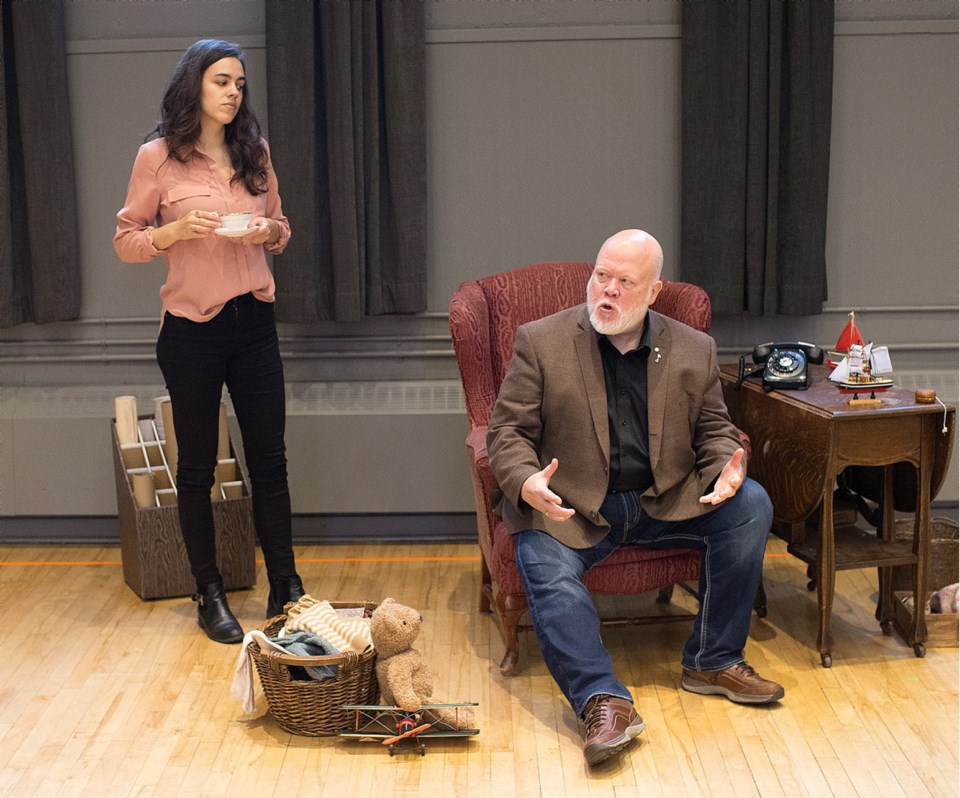ONSTAGE
What: Rattenbury: A New Canadian Opera
Where: Pacific Opera Victoria’s Baumann Centre
When: Friday through Nov. 12
Tickets: $15/30 (Sold out — waitlist being taken)
More info: pov.bc.ca or call 250-385-0222
Francis Rattenbury is known to most Victorians as the young architect responsible for the city’s most iconic buildings: the B.C. legislature and the Empress Hotel.
But it’s his life and gruesome death that brought him international fame and made for perfect operatic fodder, according to local composer Tobin Stokes.
“He had done these incredible institutions and then his life ends being killed in a small house in another country,” said Stokes, who wrote the music and libretto for Rattenbury: A New Canadian Opera.
The chamber opera has been a work in progress for several years, and the completed version debuts at Pacific Opera Victoria’s Baumann Centre on Friday. The shows are sold out, but Stokes hopes to have it staged again soon, in Victoria and beyond.
“To develop it as a full opera, beyond local interest, I had to figure out the themes and there is lots of drama to work with,” said Stokes at the Baumann Centre, which is also POV’s headquarters and rehearsal space with music director maestro Arthur Arnold.
“Unbalanced ambition and addiction are major themes,” Stokes said.
Rattenbury was 24 when he left England to pursue his career in architecture in the new province of B.C. in the late 1890s. He won a competition to design the legislative building, and while the project was lambasted for cost overruns, he went on to design several other buildings and homes in Victoria, Nanaimo and elsewhere before his career and personal life spiralled downward.
Some of his other local buildings include the Steamship Terminal, the Irish Times Pub and the Crystal Garden, as well as the Vancouver Art Gallery and the Nanaimo courthouse.
In 1923, Rattenbury left his wife and children for Alma Pakenham, a 27-year-old former field nurse, musician and two-time divorcée. They met at the Empress and later married.
Stokes said that while Rattenbury was an alcoholic, his second wife had her own addictions: sex and morphine.
“She was said to have tuberculosis, which was said to increase sex drive,” Stokes said.
“In the end, Alma got bored with [Rattenbury] and took a younger lover, which she was vilified for.”
She had an affair with their 18-year-old chauffeur, George Percy Stoner, after they moved back to England. When Rattenbury was found in their home with his skull crushed by a carpenter’s mallet, and later died, Alma and her lover were both charged.
Stoner was initially sentenced to death, but that was commuted after a public petition claimed he was manipulated by his older lover. Alma stabbed herself to death days after being acquitted of Rattenbury’s murder.
Rattenbury was buried in a grave that remained unmarked for many years. Over the years, ghost researchers have said his spirit haunts the halls and staircases of the legislature and Empress.
“Tobin has brought this story to life and found its core,” said Arnold, who lives between Powell River and Moscow, and has worked with Stokes on the opera for several years. “It’s been very intriguing to see this opera evolve.”
Arnold said intimate chamber opera settings are becoming popular in places such as Moscow.
“They’re sold out night after night. You’re sitting on the lap of the players. It’s very different from grand opera.”
The Rattenbury opera has a wealth of other Victoria elements, beyond paying tribute to the city’s premier architect and being penned by a local composer.
The opera stars internationally renowned tenor Richard Margison in the title role. Margison and soprano Kathleen Brett, who sings the role of Alma, have been involved in the show through several workshops.
The production is co-produced by POV and the Other Guys Theatre Company and directed by former Victorian Amiel Gladstone.
The set is by another well-known Victoria architect, Franc D’Ambrosio, who also designed the Baumann Centre.
“We were able to bring the designs up and look at how to make the space work for a performance,” said D’Ambrosio, noting stage scrims were made from construction fabric that covered the Empress during its recent renovation, printed with an image of Rattenbury’s famous hotel.

.png;w=120;h=80;mode=crop)

